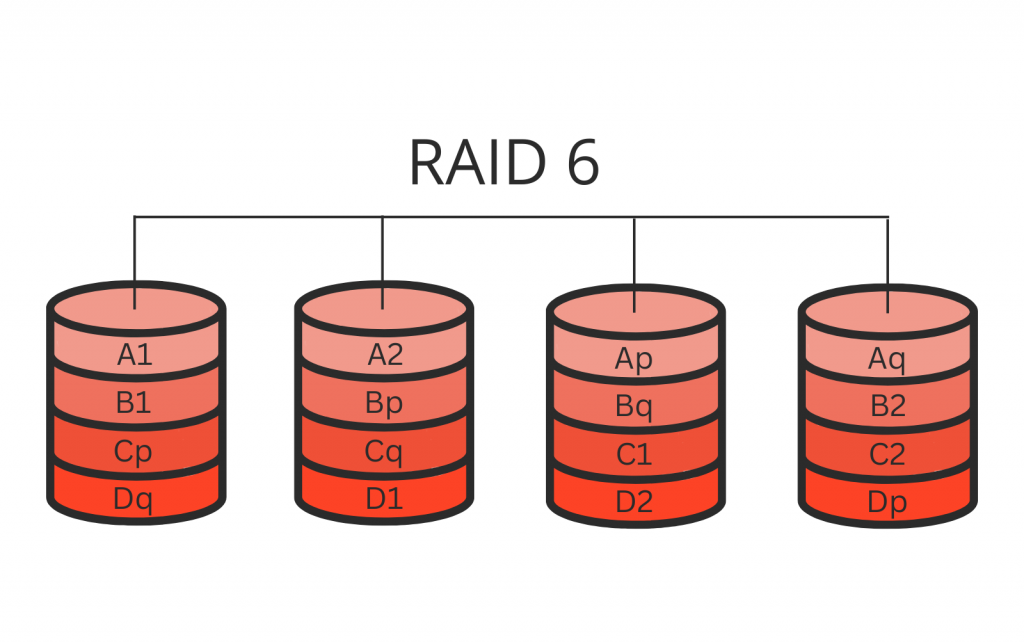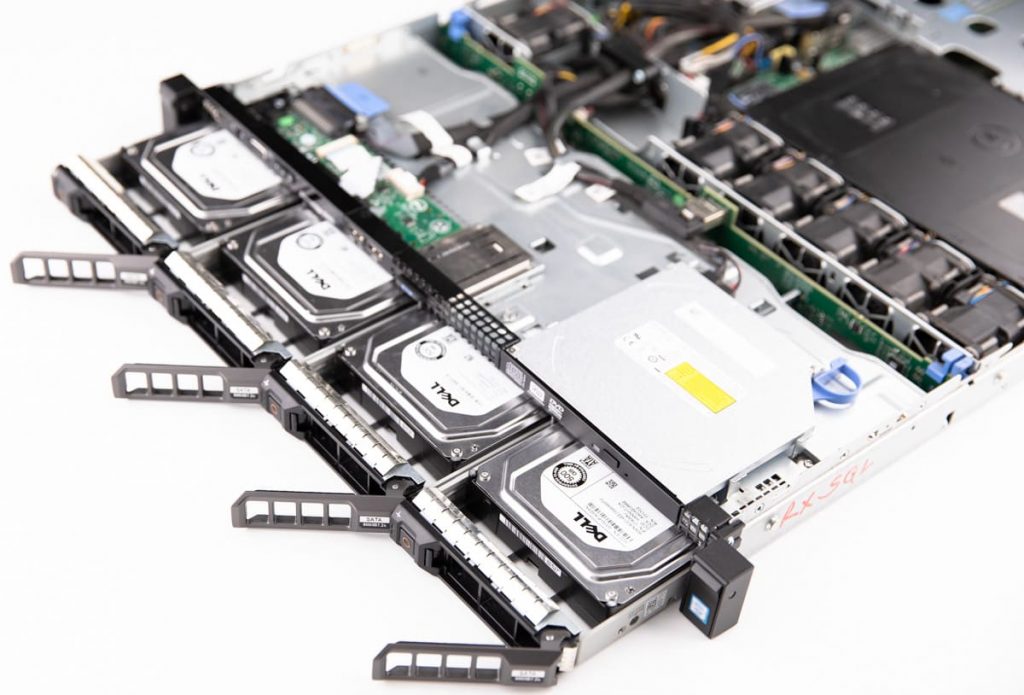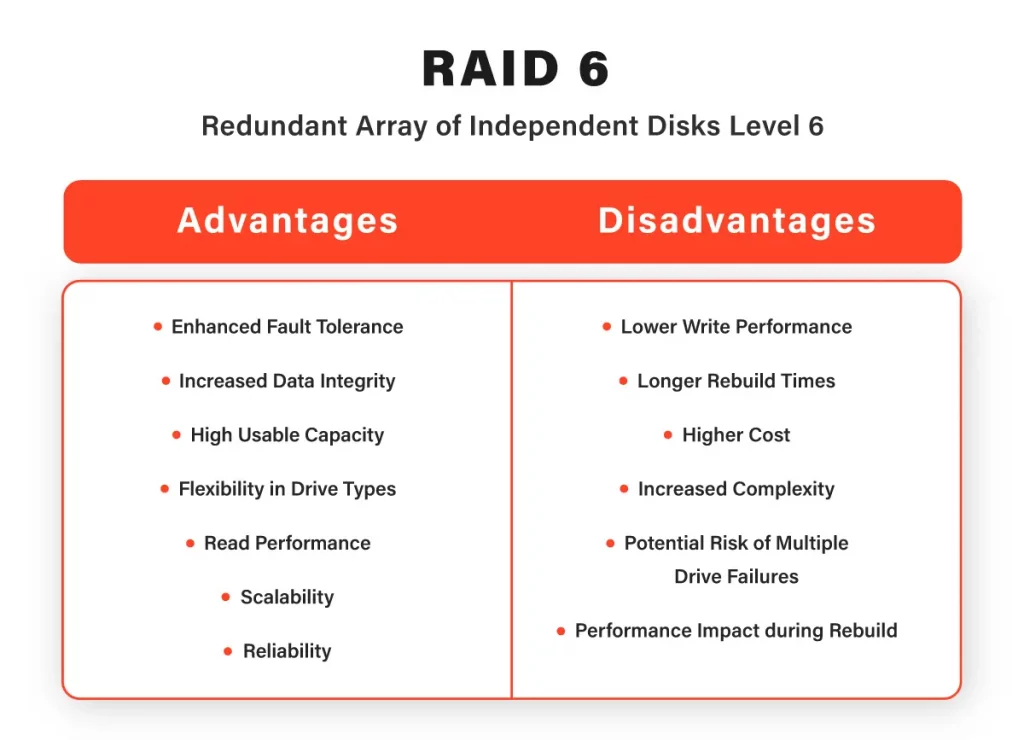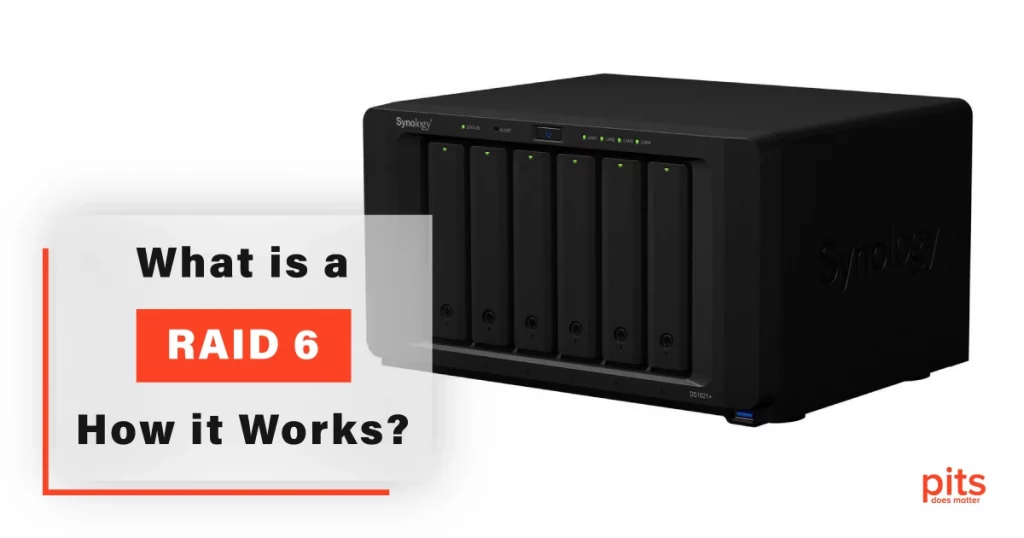In today’s data-centric landscape, ensuring the security and recoverability of critical information is paramount. RAID 6, a redundant array of independent disks (RAID) configuration, stands out as a powerful solution that combines fault tolerance and data recovery capabilities.
In this blog post, we will explore the fundamentals of RAID 6, its operational mechanisms, the advantages and disadvantages it offers, and the role of PITS Global Services in RAID 6 data recovery.
What is RAID 6?
RAID 6 is a RAID level that provides an extra layer of fault tolerance compared to other RAID configurations, such as RAID 5. It is specifically designed to offer enhanced data protection in the event of multiple disk failures. By utilizing dual parity, RAID 6 ensures both the efficient storage of data and the ability to reconstruct lost information.

How Does RAID 6 Work?
RAID 6 employs a combination of data striping and dual parity to achieve fault tolerance. When data is written to a RAID 6 array, it is divided into smaller data blocks that are distributed across multiple disks. Alongside the data blocks, parity blocks are calculated and stored on separate disks.

Unlike RAID 5, which utilizes single parity, RAID 6 employs double parity. This means that two sets of parity data are calculated and stored for each data block. The presence of dual parity enables RAID 6 to withstand the failure of two disks simultaneously.
In the event of a disk failure, the missing data can be reconstructed using the remaining data blocks and parity information. The dual parity feature ensures accurate data recovery, maintaining the fault tolerance and integrity of the RAID 6 array.
Advantages of RAID 6
High Fault Tolerance
RAID 6 offers superior fault tolerance compared to RAID 5, as it can tolerate the failure of up to two disks. This ensures that critical data remains accessible even in the face of multiple disk failures.
Enhanced Data Redundancy
With dual parity, RAID 6 provides an additional layer of redundancy. The redundant parity data enables the reconstruction of lost data blocks, reducing the risk of data loss.
Improved Storage Capacity
RAID 6 efficiently utilizes storage capacity by distributing data blocks and dual parity across multiple disks. This allows for large-scale data storage while maintaining fault tolerance.
Reliable Data Service
The dual parity feature of RAID 6 facilitates reliable and efficient data recovery during the reconstruction process. This minimizes the risk of data loss and ensures the availability of critical information.
Disadvantages of RAID 6
Lower Write Performance
Due to the overhead of calculating and writing dual parity information, RAID 6 generally exhibits slower write speeds compared to RAID 5. This can impact applications that heavily rely on fast writing speeds.
Increased Complexity
The inclusion of dual parity calculations and the need for additional storage for parity data complicate the RAID 6 configuration. This increased complexity may require specialized expertise for setup and maintenance.
Higher Cost
Implementing RAID 6 requires more disk drives than RAID 5, resulting in higher storage infrastructure costs. The need for additional purposes and the added complexity of managing dual parity can impact the overall cost-effectiveness of the RAID solution.

Benefits of Our Using Services for RAID 6 Array
PITS Global Data Recovery Services is a reliable company that specializes in RAID 6 data recovery for both businesses and individuals. Our team of engineers possesses extensive knowledge and expertise in RAID systems, enabling us to efficiently restore lost, corrupted, or deleted data from all RAID levels.
To commence the recovery process, we conduct a thorough and risk-free evaluation of the affected device. This meticulous inspection allows us to gain a comprehensive understanding of the circumstances surrounding the data loss and the extent of the damage.
Based on the evaluation results, our experienced engineers carefully select the most suitable data recovery strategy tailored to the specific device.
Subsequently, our priority is to restore access to the data in a secure and successful manner. Our highly skilled technicians exclusively work on RAID devices within an ISO Certified Class 10 Cleanroom environment. By conducting the recovery process in this controlled environment, we ensure the utmost security for your device and data. This state-of-the-art facility prevents any potential damage caused by dirt, humidity, or dust, safeguarding the integrity of your RAID array.

If you’re facing a data loss situation, don’t hesitate to contact us. Our 24/7 data recovery services are available to you, 365 days a year. Let us help you recover your precious data today.

We start the recovery process with a risk-free evaluation. Our technicians estimate reasons for data loss and the level of damage. Based on it, we select the most suitable recovery strategy.

With years in the data recovery industry, our company supports the highest customer satisfaction rate. We do everything to provide a positive experience for our clients.

During our remote customer file verification session, you will thoroughly review all necessary documents and records to ensure accuracy and compliance.

We offer data recovery services from over 50 locations across the US. This means that no matter where you are located, you can access our services to recover the data.

With our certified data recovery services and 99% success rate, we are confident that we can recover your precious data and get you back up and running in no time.
With extensive expertise in the field of data recovery, PITS Global Data Recovery Services boasts an impressive track record of achieving a 99% success rate. Our primary objective is to deliver a positive customer experience by ensuring a secure process and attaining the best possible results. Join the ranks of our satisfied clients by commencing your RAID 6 data recovery journey with us today.
To get started, simply reach out to us via our customer service hotline or by completing the request help form provided below. Our team of specialists is readily available to address any inquiries you may have and furnish you with all the necessary details you require.
RAID 6 offers an effective solution for organizations seeking robust data protection and recovery capabilities. With its dual parity feature, RAID 6 enhances fault tolerance and reduces the risk of data loss. While it presents certain disadvantages, such as lower write performance and increased complexity, these factors can be managed with proper consideration and expertise.
In the unfortunate event of data loss in a RAID 6 configuration, PITS Global Data Recovery Services provides specialized data recovery solutions. Their comprehensive approach and technical expertise ensure the successful retrieval of critical data, minimizing downtime and safeguarding the continuity of business operations.
Frequently Asked Questions
How many drives can fail in RAID 6?
RAID 6 can endure the simultaneous failure of two drives without losing any data. This high redundancy provides robust data protection and fault tolerance, making it well-suited for applications requiring secure data storage.
What is RAID 6 and how does it differ from other RAID levels?
RAID 6 is a redundant array of independent disks configuration that utilizes dual parity to provide enhanced data protection. Unlike RAID 5, which uses single parity, RAID 6 offers an extra layer of fault tolerance by employing two parity blocks.
How does RAID 6 protect data in the event of disk failures?
RAID 6 can withstand the simultaneous failure of any two disks without losing data. The dual parity scheme allows the system to reconstruct the lost data using the remaining disks and parity information, ensuring data integrity and preventing data loss.
What are the advantages of using RAID 6 over other RAID levels?
RAID 6 offers enhanced fault tolerance, allowing for the failure of two disks without data loss. It also provides larger storage capacity compared to RAID 1 or RAID 5. Additionally, RAID 6 performs well in write operations and offers efficient data recovery.
Does RAID 6 have any drawbacks or limitations?
While RAID 6 offers improved fault tolerance, it has slightly lower write performance compared to RAID 5 due to the additional calculations required for dual parity. Additionally, implementing RAID 6 requires a higher number of disks, which can increase the cost of the storage solution.
Is RAID 6 suitable for all types of data storage applications?
RAID 6 is particularly beneficial for applications that require a high level of data protection, such as critical databases or enterprise-level storage. It is also suitable for environments where large storage capacities are needed. However, it may not be necessary for less critical or small-scale storage needs where other RAID levels could suffice.
How many drive is required for minumum in RAID 6?
At least four drives are necessary for RAID 6, utilizing dual parity. This implies that it requires a minimum of two drives for redundancy and two drives for storing data.
